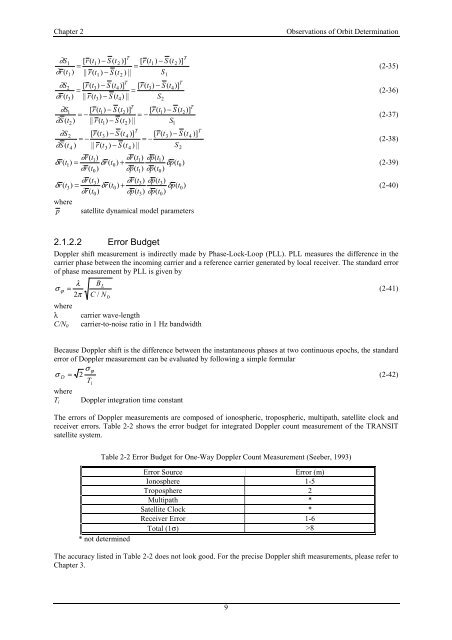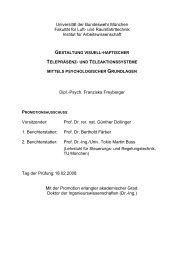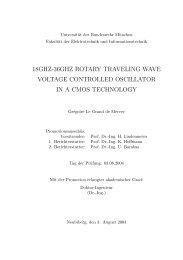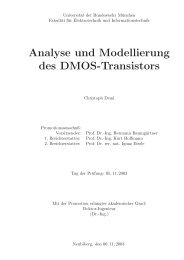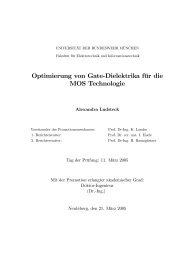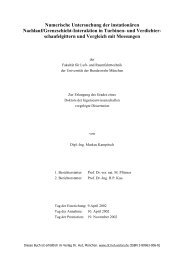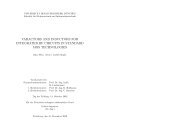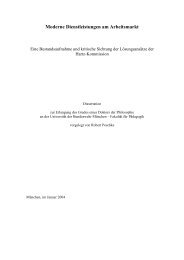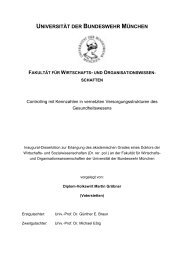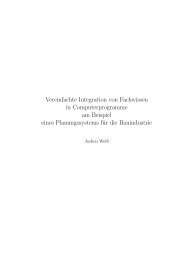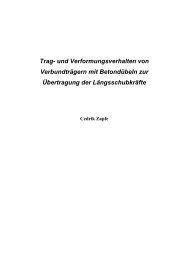Precise Orbit Determination of Global Navigation Satellite System of ...
Precise Orbit Determination of Global Navigation Satellite System of ...
Precise Orbit Determination of Global Navigation Satellite System of ...
Create successful ePaper yourself
Turn your PDF publications into a flip-book with our unique Google optimized e-Paper software.
Chapter 2 Observations <strong>of</strong> <strong>Orbit</strong> <strong>Determination</strong><br />
∂S1<br />
[ r(<br />
t1)<br />
− S ( t2<br />
)] [ r ( t1)<br />
− S ( t 2 )]<br />
=<br />
=<br />
∂r<br />
( t ) || r(<br />
t ) − S ( t ) || S<br />
1<br />
2<br />
t3<br />
1<br />
∂S<br />
[ r ( t3)<br />
− S ( t [ r(<br />
t3)<br />
− S ( t<br />
=<br />
=<br />
∂r<br />
( ) || r ( t ) − S ( || S<br />
1<br />
t2<br />
3<br />
1<br />
T<br />
2<br />
T<br />
4)]<br />
t4)<br />
T<br />
( t2)]<br />
S ( t2)<br />
||<br />
T<br />
S ( t 4 )]<br />
∂S<br />
[ r ( t1)<br />
− S [ r ( t1)<br />
− S ( t<br />
= −<br />
= −<br />
∂S<br />
( ) || r ( t ) −<br />
S<br />
∂S<br />
2 [ r ( t3<br />
) −<br />
[ r ( t3<br />
) − S ( t4<br />
)]<br />
= −<br />
= −<br />
∂S<br />
( t ) || r ( t ) − S ( t ) || S<br />
4<br />
3<br />
4<br />
2<br />
1<br />
4<br />
1<br />
)]<br />
T<br />
2<br />
T<br />
2<br />
)]<br />
T<br />
T<br />
9<br />
(2-35)<br />
(2-36)<br />
(2-37)<br />
(2-38)<br />
∂r(<br />
t1)<br />
∂r<br />
( t1)<br />
∂p(<br />
t1)<br />
δ r( t1)<br />
= δr(<br />
t0)<br />
+<br />
δp(<br />
t0)<br />
(2-39)<br />
∂r(<br />
t ) ∂p(<br />
t ) ∂p(<br />
t )<br />
0<br />
1<br />
0<br />
∂r<br />
( t3)<br />
∂r<br />
( t3)<br />
∂p(<br />
t3)<br />
δ r( t3)<br />
= δr(<br />
t0)<br />
+<br />
δp(<br />
t0)<br />
(2-40)<br />
∂r(<br />
t0)<br />
∂p(<br />
t3)<br />
∂p(<br />
t0)<br />
where<br />
p satellite dynamical model parameters<br />
2.1.2.2 Error Budget<br />
Doppler shift measurement is indirectly made by Phase-Lock-Loop (PLL). PLL measures the difference in the<br />
carrier phase between the incoming carrier and a reference carrier generated by local receiver. The standard error<br />
<strong>of</strong> phase measurement by PLL is given by<br />
B L<br />
λ<br />
σ ϕ = (2-41)<br />
2π C / N<br />
0<br />
where<br />
λ carrier wave-length<br />
C/N0 carrier-to-noise ratio in 1 Hz bandwidth<br />
Because Doppler shift is the difference between the instantaneous phases at two continuous epochs, the standard<br />
error <strong>of</strong> Doppler measurement can be evaluated by following a simple formular<br />
σ ϕ<br />
σ D = 2<br />
(2-42)<br />
Ti<br />
where<br />
Doppler integration time constant<br />
Ti<br />
The errors <strong>of</strong> Doppler measurements are composed <strong>of</strong> ionospheric, tropospheric, multipath, satellite clock and<br />
receiver errors. Table 2-2 shows the error budget for integrated Doppler count measurement <strong>of</strong> the TRANSIT<br />
satellite system.<br />
Table 2-2 Error Budget for One-Way Doppler Count Measurement (Seeber, 1993)<br />
* not determined<br />
Error Source Error (m)<br />
Ionosphere 1-5<br />
Troposphere 2<br />
Multipath *<br />
<strong>Satellite</strong> Clock *<br />
Receiver Error 1-6<br />
Total (1σ) >8<br />
The accuracy listed in Table 2-2 does not look good. For the precise Doppler shift measurements, please refer to<br />
Chapter 3.


